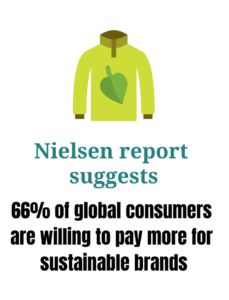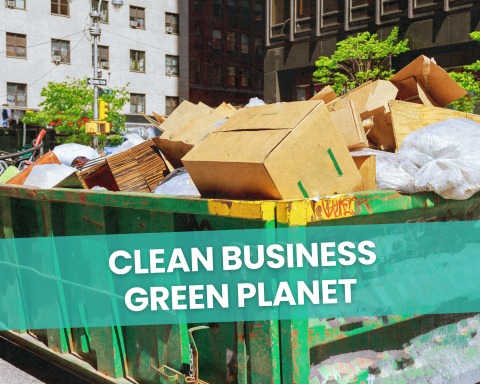How is Sustainability Important in Supply Chain? The Impact Explored
Every second, the world loses forested land nearly the size of a soccer field, largely due to unsustainable business practices. Let that sink in. In the heartbeat of our planet, the need for sustainable supply chain screams louder than ever. It’s not just a trend, it’s a clarion call for change.
This article isn’t just a read, it’s a journey into understanding how every link in the supply chain can be a step towards healing our world.
We’ll explore the challenges, innovations, and real-world impacts of embracing sustainability in supply chains, offering insights and solutions that resonate with businesses and consumers alike.
Table of Contents
The Rising Tide of Sustainable Supply Chain
A sustainable supply chain is like a healthy ecosystem, where each part works in harmony for the greater good. It’s about integrating eco-friendly practices from the sourcing of raw materials to the manufacturing, distribution, and eventual disposal of products.
This shift mirrors a broader societal change where sustainability is as crucial as profitability.
Why Sustainability is No Longer Optional
In today’s world, sustainability is a business imperative. A 2023 Nielsen report suggests that 66% of global consumers are willing to pay more for sustainable brands.
This shift isn’t just driven by consumer preference, it’s also fueled by stricter environmental regulations and a growing awareness of climate change impacts.
The Environmental and Economic Impacts
Sustainable supply chains significantly reduce the ecological footprint of businesses. For instance, using renewable energy sources in manufacturing cuts down greenhouse gas emissions, while sustainable packaging reduces landfill waste.
These practices don’t just protect the environment, they also resonate with environmentally conscious consumers.
Economic Advantages for Businesses
Embracing sustainability can also bolster a company’s bottom line. Efficient resource use and waste reduction lead to cost savings.
Furthermore, sustainable practices often streamline operations and foster innovation, opening up new market opportunities and enhancing brand reputation.
Challenges and Solutions
The path to sustainability is fraught with challenges like the need for upfront investment in green technologies and the complexity of overhauling existing supply chain structures. Additionally, there’s often a knowledge gap in understanding the best practices for sustainability.
Innovative Solutions and Strategies
To overcome these challenges, businesses are turning to innovative solutions like circular economy models, which focus on reuse and recycling to minimize waste.
Advanced analytics and IoT technologies are also being employed to optimize supply chain operations and reduce environmental impact.
Happen Ventures – Leading the Way in Sustainable Supply Chains
Happen Ventures stands out with its focus on tackling the often-overlooked issue of unsellable inventory. By reimagining waste as a resource, they help businesses turn what was once a loss into an opportunity for recovery and reuse.
For example, Happen Ventures collaborated with a major retailer to redirect 60% of their unsellable inventory, which was previously destined for landfills, to charitable organizations and recycling programs.
This not only reduced waste but also enhanced the retailer’s community engagement and brand image.
The Future of Sustainable Supply Chains
Looking ahead, sustainable supply chains are poised to become the norm. Innovations like blockchain for enhanced traceability and AI for predictive analytics are set to redefine supply chain operations.
These technologies will enable businesses to anticipate and mitigate environmental risks more effectively.
How Businesses Can Prepare for the Future
The future is knocking on our doors, and it’s asking, “Is your business ready for a sustainable makeover?” Think about it. The world is changing, and so are the rules of the business game. It’s no longer just about profits and products, it’s about the planet too. So, how do you gear up for this green future?
First off, let’s talk learning. The world of sustainability is vast and ever-evolving. Staying informed is key. Dive into the latest trends, soak up knowledge on green technologies, and understand the nitty-gritty of eco-friendly practices. Knowledge is power, and in this case, it’s also green.
Next, innovation is your new best friend. The old ways won’t cut it anymore. It’s time to think outside the box. Maybe it’s adopting renewable energy sources, or perhaps it’s rethinking packaging. Small changes can lead to big impacts. And remember, innovation isn’t just a one-time thing, it’s a continuous journey.
Now, let’s talk collaboration. Sustainability is a team sport. It’s about working together with suppliers, customers, and even competitors. Share ideas, forge partnerships, and create a network of sustainability champions. Together, you can make a bigger impact than going it alone.
But here’s the real kicker: action speaks louder than words. It’s one thing to talk about sustainability, it’s another to live it. Start with small steps. Maybe it’s reducing waste in your operations or optimizing your supply chain for efficiency. Every step counts.
Companies like Happen Ventures are leading the charge in sustainable supply chain practices. They’re not just talking the talk, they’re walking the walk. Partnering with a company like Happen Ventures can be a game-changer. They’ve got the expertise, the experience, and the passion to help you transform your supply chain into a model of sustainability.
Final Thoughts
The journey towards sustainable supply chains is an ongoing one, with each step forward contributing to a more resilient and responsible business landscape. As we embrace these changes, we’re not just transforming supply chains, we’re shaping a future where business success and environmental stewardship go hand in hand.












